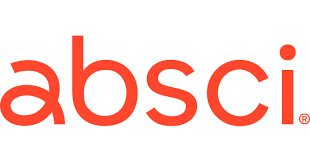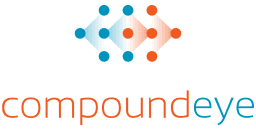





























Improved model accuracy by 22% through feature engineering and ensemble methods in a predictive maintenance project.
Reduced inference time by 40% by optimizing a deep learning model for edge devices.
Developed and maintained an automated ML pipeline for continuous model training and deployment.
Aisha developed a computer vision system for autonomous drones in agriculture. The system uses deep learning to identify crop diseases and assess plant health in real-time. Her work resulted in a 30% increase in early disease detection, significantly improving crop yields for farmers.
Implemented a recommendation system that increased user engagement by 35% and revenue by 15%.
Reduced data processing time by 60% through optimized distributed computing techniques.
Collaborated with cross-functional teams to integrate ML models into production systems.
Marcus created a natural language processing model for sentiment analysis of customer feedback. The model processes millions of reviews daily, providing actionable insights to improve product quality. His work has enabled the company to respond to customer concerns 50% faster.
Developed a fraud detection system that reduced false positives by 40% while maintaining 99.9% accuracy.
Increased model training speed by 3x through implementation of distributed GPU computing.
Mentored junior data scientists in advanced machine learning techniques and best practices.
Elena built a reinforcement learning system for optimizing energy consumption in smart buildings. The system learns from environmental data and user behavior to adjust HVAC systems in real-time. Her project has led to an average of 25% reduction in energy costs for implemented buildings.
Improved speech recognition accuracy by 18% for a voice-activated assistant through fine-tuning of transformer models.
Reduced customer churn by 25% using a predictive model integrated with the company’s CRM system.
Implemented MLOps practices, significantly improving model versioning, deployment, and monitoring.
Jamal developed a generative AI model for creating personalized workout plans. The model takes into account user goals, fitness level, and available equipment to generate tailored exercise routines. His project has increased user retention in the fitness app by 40%.
Increased ad click-through rates by 30% using a multi-armed bandit algorithm for content optimization.
Reduced infrastructure costs by 50% through efficient model deployment and cloud resource management.
Led the adoption of explainable AI techniques to improve model interpretability and stakeholder trust.
Sophie created a time series forecasting model for predicting renewable energy production. The model integrates weather data and historical production data to provide accurate forecasts up to 72 hours in advance. Her work has enabled better grid management and increased renewable energy utilization by 15%.
With our extensive candidate network and dynamic team search approach, Redfish recruiters can greatly reduce your time to hire compared to in-house hiring processes.
Redfish recruiters handle every step of the process, including finding talent, screening candidates, scheduling interviews, conducting reference checks, and negotiating the offer, freeing up your in-house HR staff to focus on their other responsibilities.
We form the same in-depth relationships with clients that we establish with candidates, taking the time to fully understand your company and needs and giving each client a single point of contact for all communications.
We understand the roles we recruit for inside and out, whether that’s the technical jargon familiar to engineers and programmers or the skills that make an exceptional sales or marketing hire. When we send along a candidate, you can trust they have what it takes to excel.
With 20+ years in the recruiting industry, Redfish Technology has built an extensive network of connections and candidates, and our reputation precedes us. We’re a recruiting firm top talent wants to work with, giving you access to better talent than you’ll find from other services.




Python is essential. Proficiency in R, Java, or C++ can also be valuable. SQL is important for data manipulation, and knowledge of Scala or Julia can be beneficial for specific projects.
Supervised learning uses labeled data to train models, where the desired output is known. Unsupervised learning works with unlabeled data to find patterns or structures without predetermined outputs.
Techniques to handle overfitting include regularization, cross-validation, increasing training data, feature selection, and using simpler models. Dropout for neural networks and pruning for decision trees are also effective methods.
Key tools include scikit-learn, TensorFlow, PyTorch, Keras, and pandas. Familiarity with cloud platforms like AWS SageMaker or Google Cloud ML Engine is also valuable.
Feature engineering involves creating new features from existing data, selecting relevant features, and transforming features to improve model performance. This process requires domain knowledge, creativity, and iterative experimentation.
Data preprocessing is crucial for model performance. It includes handling missing values, normalizing or standardizing data, encoding categorical variables, and addressing class imbalance. Proper preprocessing ensures data quality and prepares it for model training.
Model evaluation depends on the problem type. For classification, metrics like accuracy, precision, recall, and F1-score are used. For regression, mean squared error or R-squared are common. Cross-validation is used to ensure robust evaluation.
MLOps involves practices for deploying and maintaining ML models in production. This includes version control, automated testing, continuous integration/deployment, monitoring model performance, and managing model updates.
For big data, engineers use distributed computing frameworks like Apache Spark or Dask. They may implement batch processing or streaming solutions, and use cloud computing resources for scalability.